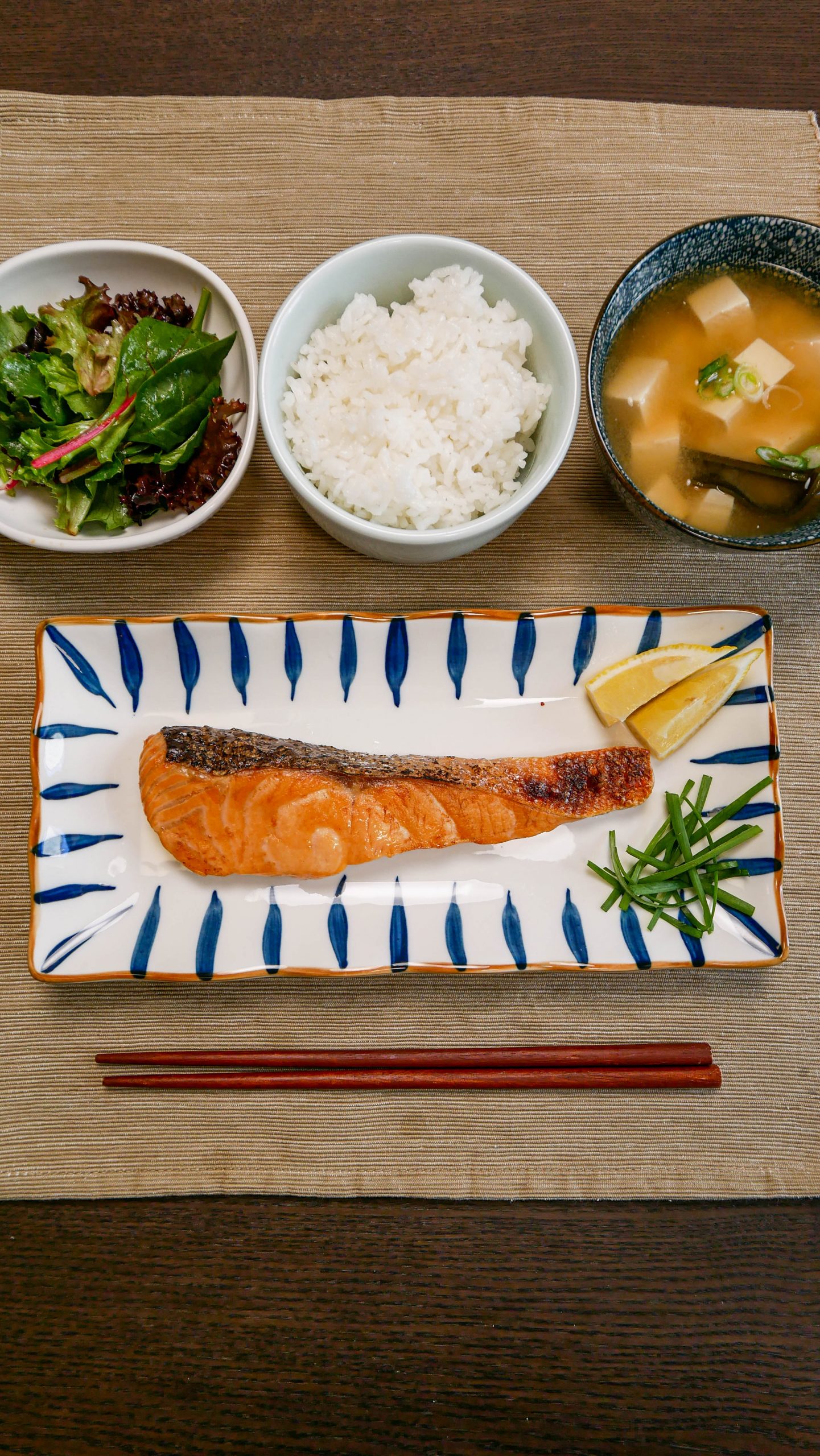
Shiozake (Japanese Salted Salmon)
This salmon dish only requires three ingredients that you can easily find in your pantry. Because this dish is more on the saltier side, you’ll want to have extra rice on hand because you’ll probably be going back for more!
Ingredients
- 1 lb salmon skin on
- 1 tbsp sake or cooking wine
- 2.5 tbsp salt
- lemon slices optional
Instructions
- Slice salmon into 4 one-inch pieces on a diagonal. The salmon skin should be facing up to ensure a nice char when cooking.
- Pour sake over the salmon and evenly spread with hands. Set aside for 10 minutes.
- After 10 minutes, gently pat the salmon down making sure to dry very well.
- Generously salt both sides and the skin of the salmon.
- Place a sheet of paper towel on the bottom of a glass or tight seal container.
- Place the salmon in the container, making sure there is enough space around each piece. If you need to stack the salmon, add another sheet of paper towel in between each stack. Add one last sheet of paper towel on top and close the container lid.
- Transfer to the fridge and allow the salmon to cure for at least 1 day and up to 3 days.
- When you are ready to cook the salmon, remove from fridge.
- Place the salmon sliced (skin side up) on a lined baking tray.
- Broil on high for 6-8 minutes or until golden brown, on one side only. The salmon does not need to be flipped.
- Remove from the broiler and rest on a wire rack. This is optional however, if you'd like, you can torch the skin for a crispier texture.
- Serve with a bowl of fresh rice and your favorite side dishes.
Notes
- This recipe is intended to be very salty. Keep in mind that the longer the salmon cures in the fridge, the saltier it will become.
- When choosing your salmon fillets, make sure to go for the freshest ones. Because this dish is only seasoned with salt, you need fresh, high-quality salmon for the best taste and flavor. Ask your fishmonger to help you select the best salmon.
- Japanese salted salmon is traditionally grilled, but this recipe involves broiling the fish. You can also fry it in a pan or bake it, especially if you don’t have a grill.
- The sake can be omitted if you have dietary restrictions.
- The cooking time indicated in this recipe is approximate. It may vary depending on the thickness of your salmon.
- Keep leftovers in an air-tight container and store them in the fridge. They can last up to 2 to 3 days and be used as a filling for onigiri.